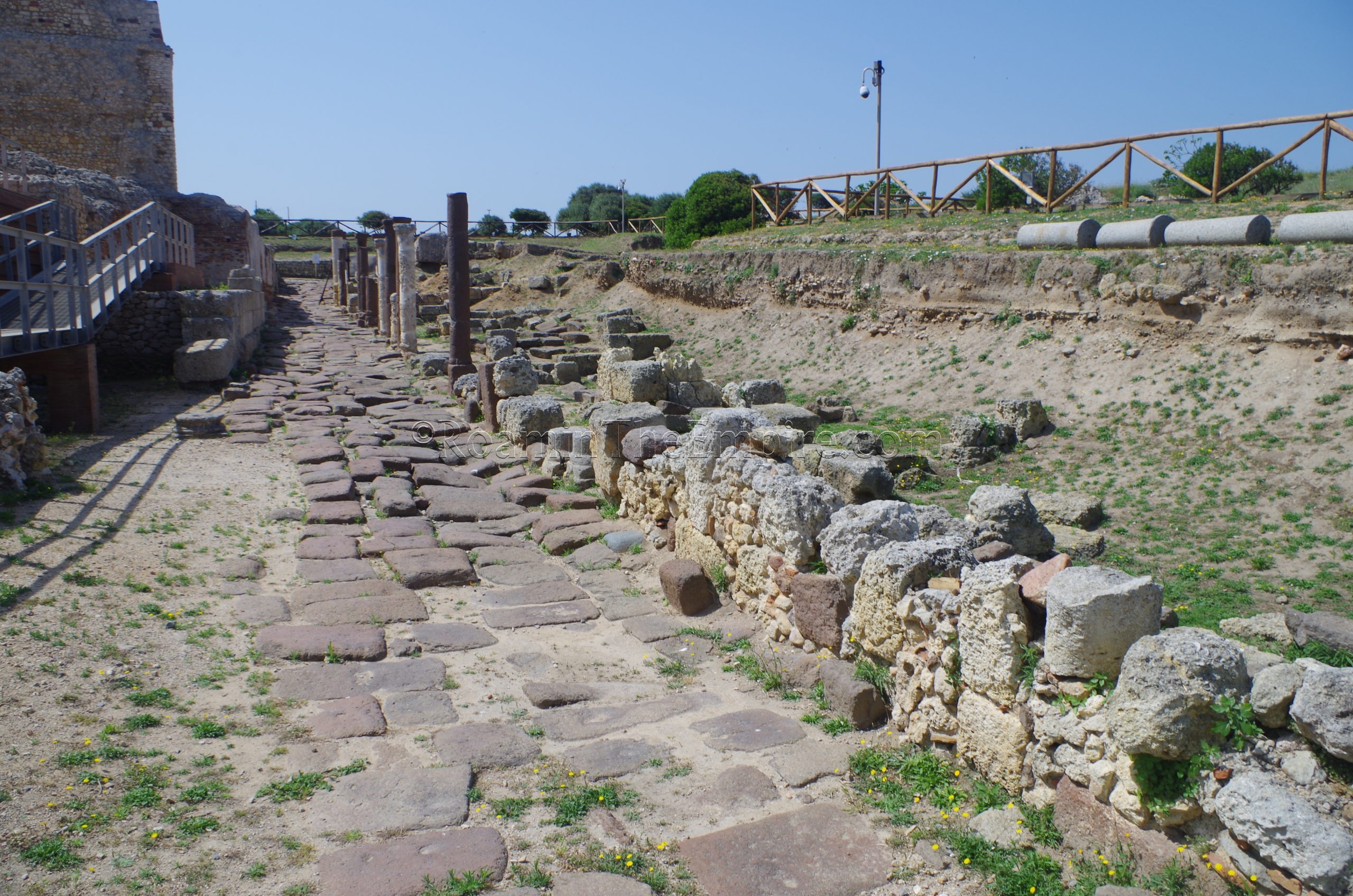
History
Today, Porto Torres is one of the most important ports on the island of Sardinia. In antiquity, the city’s Roman predecessor, Turris Libysonis (alternatively Turris Libyssonis or Turris Libisonis), held a similar status on the island. Despite the name seeming to suggest some connection with North Africa, Turris Libysonis appears to be a settlement of Roman origin, with no significant Punic presence prior to the Roman presence. Though some Punic objects have been found at the site, the amount suggests either residual trade with the Nuragic peoples (who would have been trading with the Carthaginians extensively during the Punic occupation of the island), or perhaps a small Punic emporium set up in the area. The lack of North African names found at Turris Libysonis would also suggest that there was no significant Punic population preceding the Romans here.
When exactly the Roman settlement was established at Turris Libysonis is not clear, a colony was founded perhaps as early as 46 BCE by Caesar; Colonia Julia ad Turrem Libisonis. The colony may have been slightly later, though; possibly a contingent of veterans of Marcus Antonius’ army following the civil war between Antonius and Octavian. The settlement quickly grew to be an important administrative center on the island. The primary north-south artery along Sardinia ran between Turris Libysonis in the north and Caralis in the south, much as it does today.
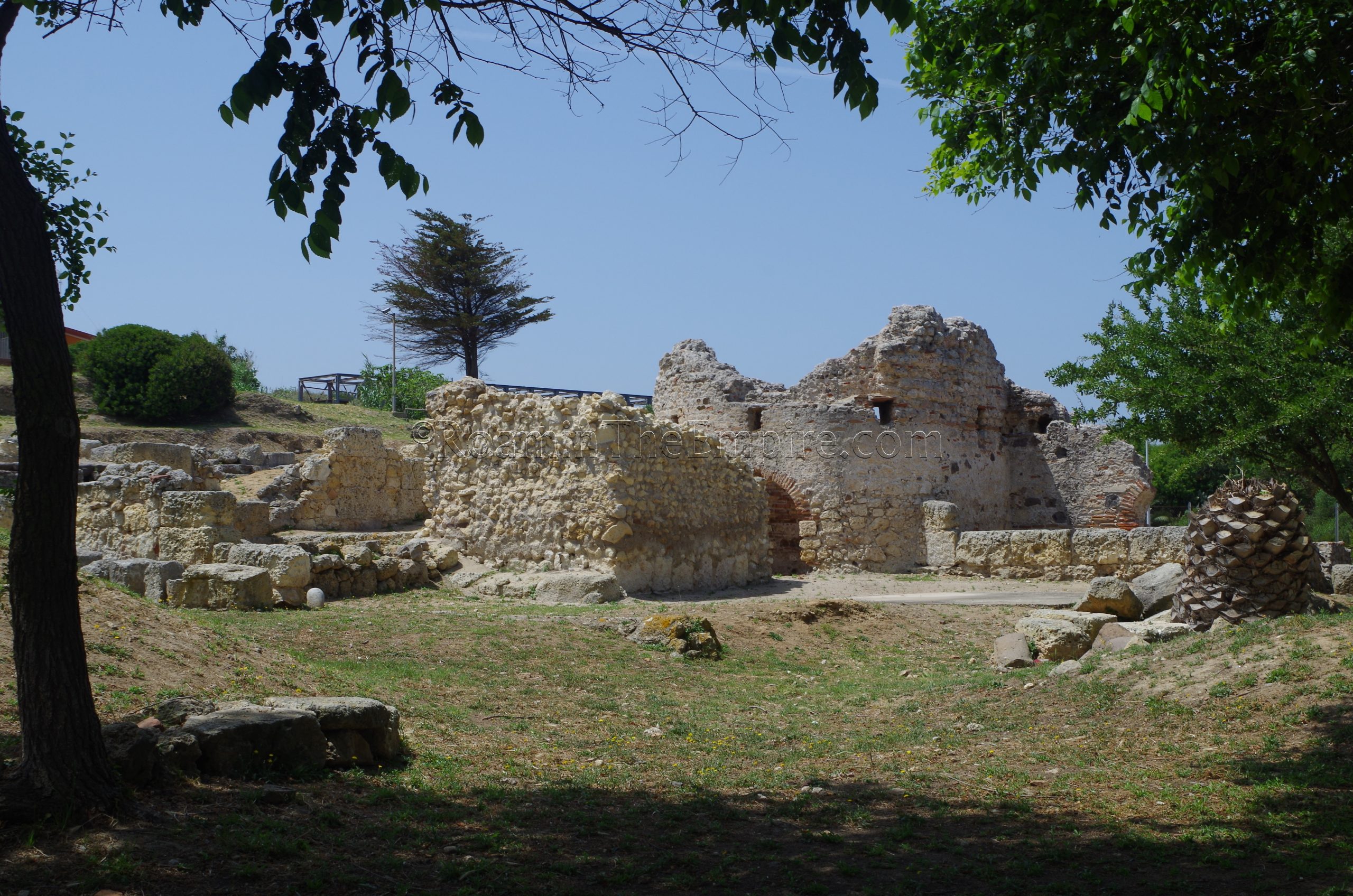
As Sardinia was an important producer of grain for Rome, Turris Libysonis was likely a point of embarkation for some of these grain stores. One of the mosaics of the Piazzale degli Corporazioni in Ostia notes the presence of a merchant guild from Turris Libysonis operating in the port city of Rome. Through the middle of the 2nd century CE, the port seemed to be primarily concerned with exchange between Gaul and Italy, though after that point, ceramic finds indicate the bulk of Turris Libysonis’ incoming trade originated in Africa. The city seems to have remained an important port through the 5th century CE, when the Vandals occupied the island. The bulk of the population of Turris Libysonis seems to have shifted to Sassari in the 11th century CE.
Getting There: Porto Torres has a train station that has relatively frequent connections with Sassari, and from there the other major population centers of Sardinia. The nearest airport is in Alghero, which serves flights primarily from Italy, but also from a few other destinations in Europe. Porto Torres is also a ferry hub, with ferry service from Barcelona, Marseille, and Genoa among the cities connected with Porto Torres by ferry. The core of Porto Torres is relatively small, so getting around by foot is pretty easy, and all the Roman remains are within pretty easy walking distance of each other.
Necropoli and Column
Most of the archaeological remains of Turris Libysonis are centralized in one archaeological area. The Roman port seems to have been completely artificial, just as the modern port, and it’s believed that the modern port completely overlays the Roman port, obscuring any trace of the ancient remains. In a small raised plaza along Via Lungomare Balai, just east of the intersection with Via Principe di Piemonte, are the remains of a small circular structure. There are no signs and I can’t seem to find any mention of what it is at this location. The construction is a little haphazard, so it may be post-Roman. This may be related to the Hypogeum and Columbarium of Tanca Borgona, a 3rd to 4th century CE hypogeum burial complex that is apparently located in the vicinity. That complex is supposedly open on Saturdays from 16:00 to 20:00 and Sundays from 9:00 to 20:00, though again, I could find no traces of any archaeological area located there.
Not far from the possible funerary structure, is the Area Archeologica Tombe Ipogeiche Romane. Located at Via Libio 53, I stumbled upon this while walking around town, so I wasn’t able to set anything up, but, it is apparently open via prior reservation. The domain name for the given reservation email address is not active, so I’m not entirely certain if reservations can be made through that mean, but there is a phone number listed as well (342 6133531). The little indoor seating area at the entrance was also open and there was a lighted sign declaring it was open, but, there was no one around. So, I can’t say for sure what exactly is going on here. If one is able to gain entrance, though, a few hypogeum chamber tombs and decorated arcosolium tombs are located here.
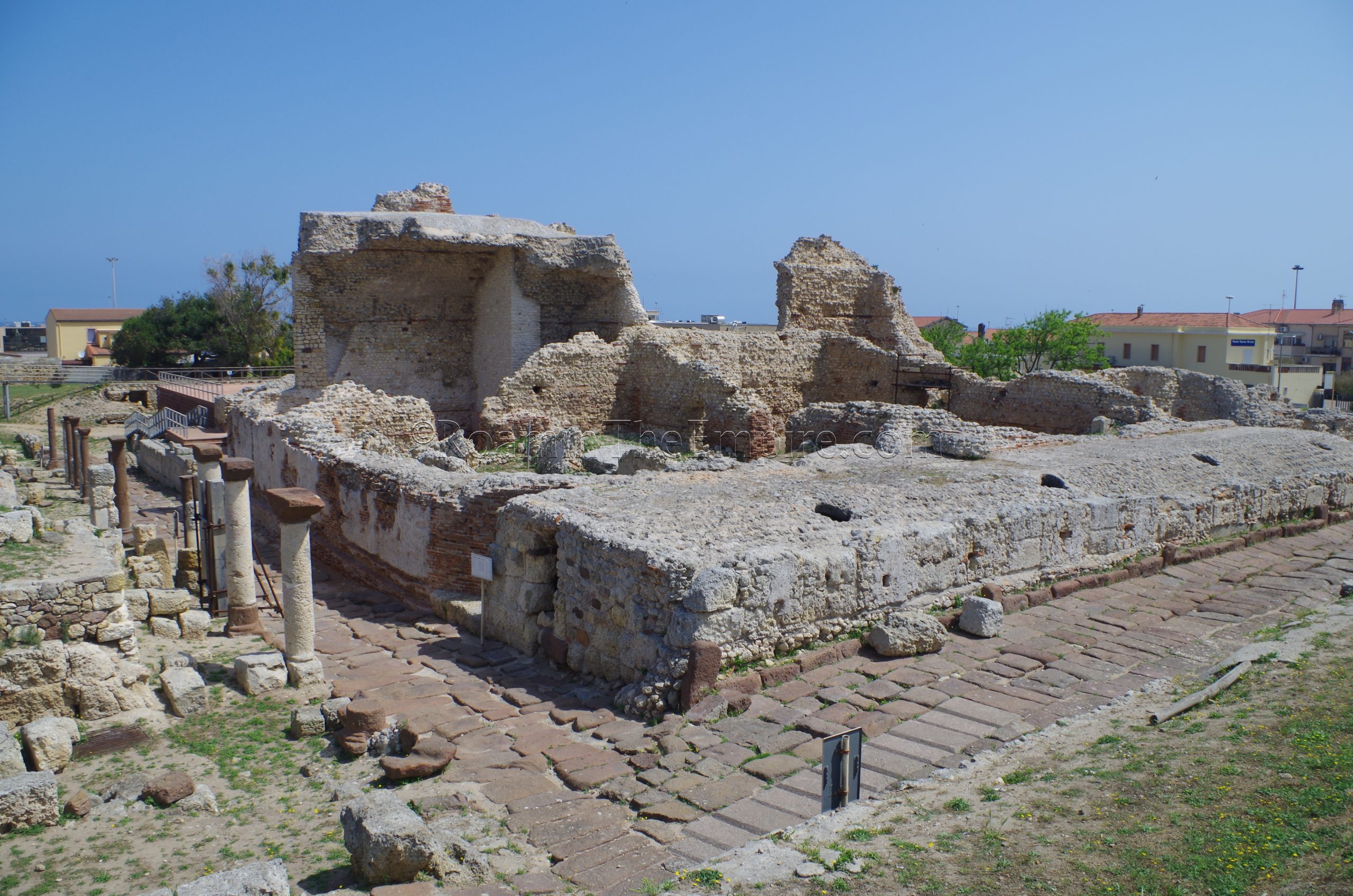
A block over and back toward the port, at the intersection of Via Mare (E25) and Corso Vittorio Emanuele II is a small green space median. Within the green space is a Roman era column. Likely spoliated from the remains of the Roman settlement at some point, as were many of the columns used in the Basilica di San Gavino in the south part of the city. A column apparently marked the end of the Caralis-Turris Libysonis road, but, this one seems to be much less ornate than one would expect (in comparison to the columns marking the end of the Via Appia in Brundisium, for instance).
Parco Archeologico di Turris Libisonis
The bulk of the remains of Turris Libysonis are contained within the Parco Archeologico di Turris Libisonis which is adjacent to the on-site museum, the Museo Archeologico Nazionale – Antiquarium Turritano. The park and museum are located at Via Ponte Romano 99. Normally, the museum and park are open Tuesday through Sunday from 9:00 to 20:00 with the combined ticket being 7 Euros. Unfortunately, the museum was closed for renovations at the time I visited (June 2019) and those restorations are ongoing as of writing (April 2020). There doesn’t seem to be any solid timetable for when the renovations will finish, so it is best to check the website directly before visiting. While the museum is closed, admission to just the archaeological park is 4 Euros.
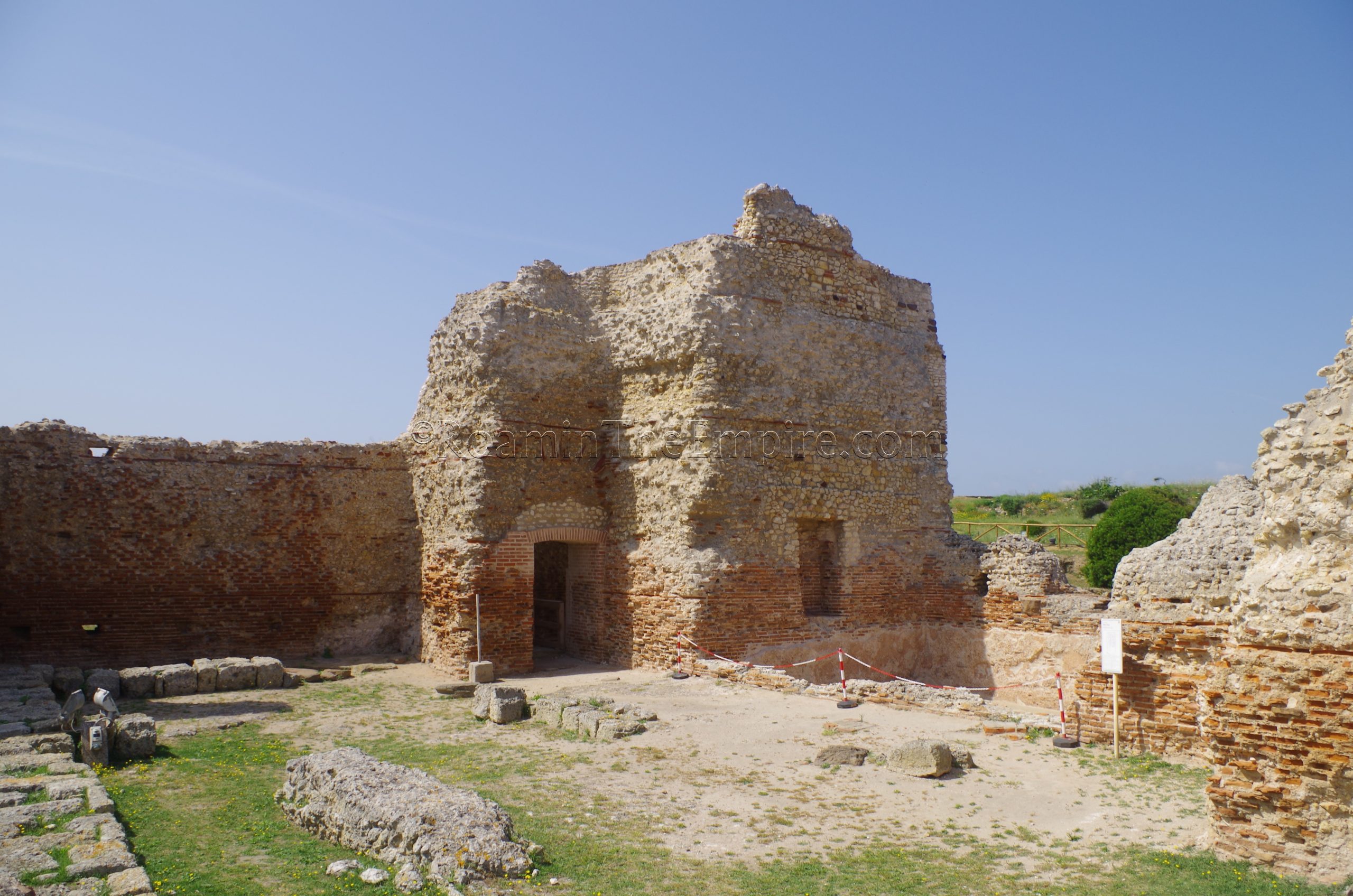
When I visited the Turris Libisonis archaeological area, I was told that a guided visit was compulsory. The guide didn’t speak very much English, but, it seemed like many parts of the site were off limits to visitors. There weren’t really hard barriers in place to limit access, so the use of the guide was primarily to keep visitors from going into these areas, I think. There itinerary departs from in front of the museum, through some fragmentary structures. A partially covered sewer channel runs along the path of what would have been a cardo, while a little further on, some of the paving stones are in place for one of the decumani.
The central structure around which the park is based is the so-called Palazzo di Re Barbaro. The name comes from the belief that the structure was part of the residence of Barbarus, governor of Sardinia from 304 to 305 CE. Much of this structure is part of a large bathing complex (the central baths) dating to the late 3rd and early 4th century CE. Only the north part of the bathing complex can be visited. Entering via a staircase on the north, one enters the spacious frigidarium with two large water basins on the east and west. Both basins retain at least part of their mosaic finish, and some pretty substantial sections of the walls of the frigidarium remain. South of the western frigidarium basin, a small corridor leads to the tepidarium. Relatively small compared to the frigidarium, not much remains of the interior elements, though the beginning curvature of the vault that made up the ceiling is visible.
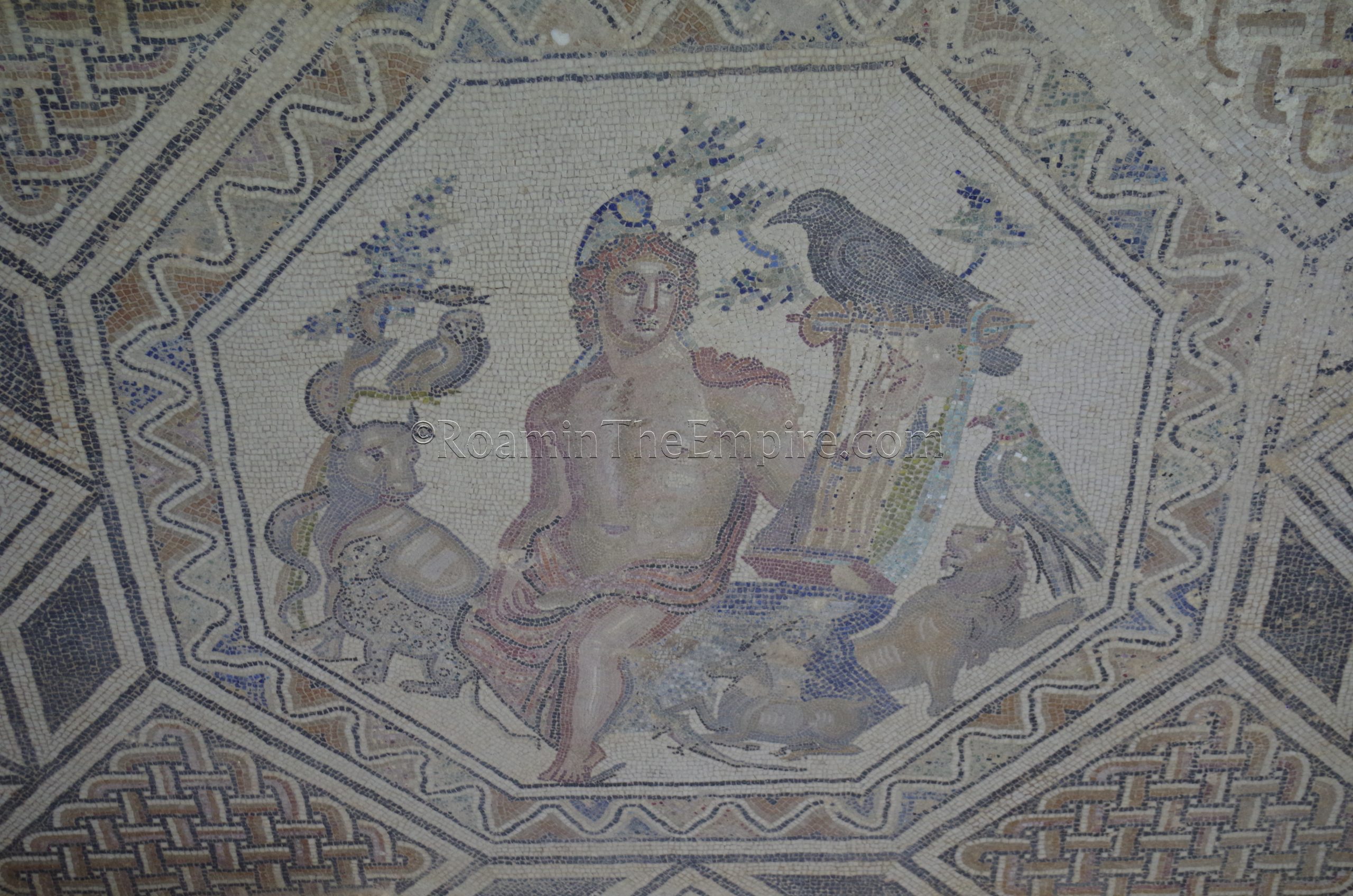
North of the bathing complex, at a lower level, is the Domus of Orpheus. An artificial roofing covers the space, which has many polychromatic mosaics in-situ. A few of the mosaics are geometric, but there is a basin that is lined with a figural mosaic of marine life. A partial mosaic of a hierogamy can be seen as well. The centerpiece, of course, is the mosaic from which the space derives its name; a mosaic with a central panel of Orpheus surrounded by animals. A number of the mosaics seemed to be under ongoing conservation efforts.
Exiting the Domus of Orpheus, the east side of the Palazzo di Re Barbaro is flanked by a porticoed cardo and tabernae. The paving stones of the cardo and some of the columns are constructed from the volcanic red trachyte, a common building material in the Roman constructions on Sardinia. The cardo stretches for about 65 meters and then, at southwest corner of the baths complex, meets up with a decumanus. The north side of the decumanus is flanked by a cryptoporticus; most of which has the ceiling intact. The interior of the cryptoporticus can be seen via a small window on the western end. A rise to the south of the decumanus affords pretty good views of the Palazzo di Re Barbaro and a small glimpse into the inaccessible caldarium of the bathing complex.
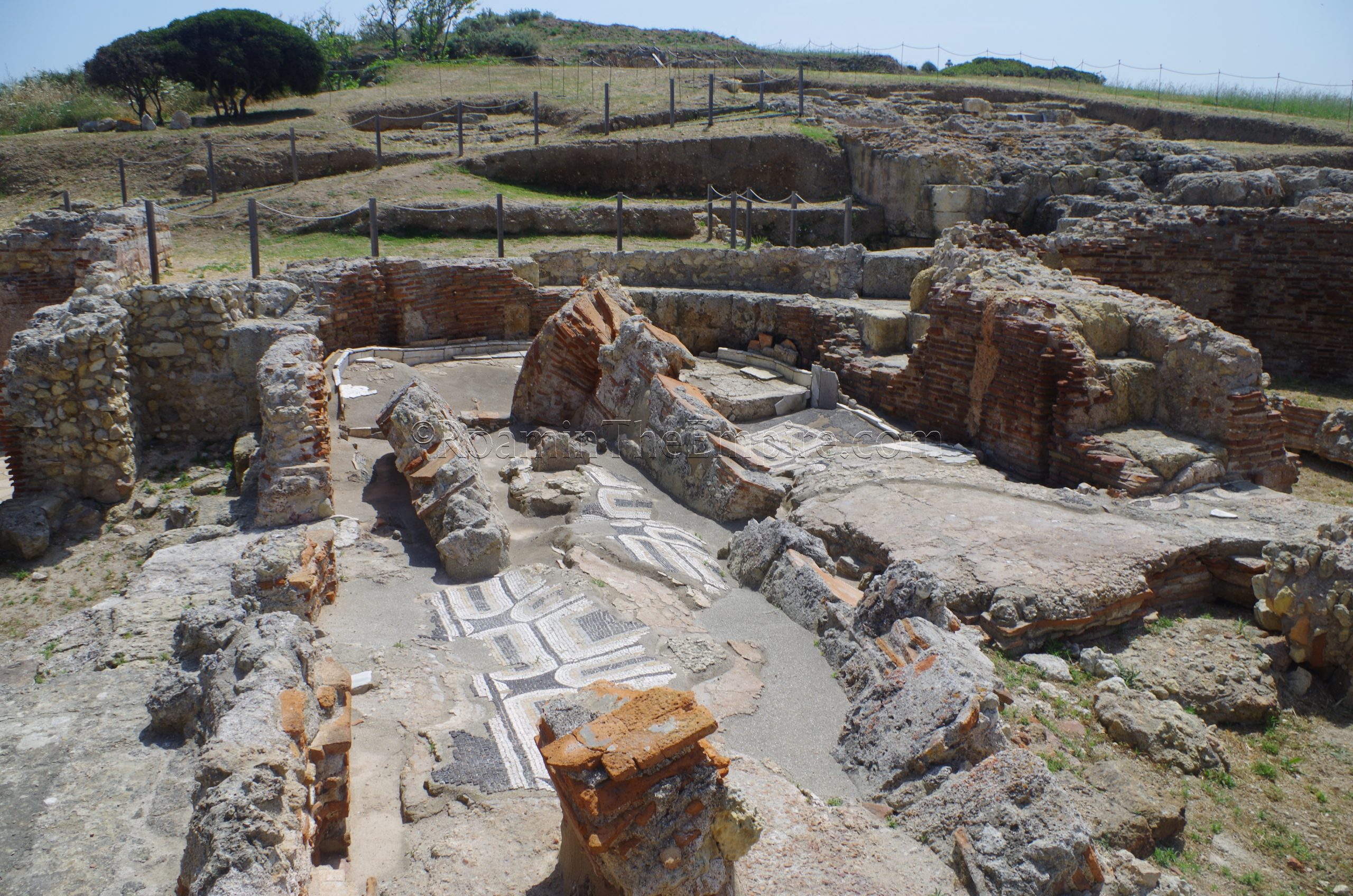
The last section of the excavations that can be visited is in the far west of the site; the Pallottino Baths, named after the archaeologist who excavated them, Massimo Pallottino. Before reaching the main structure of the baths, four columns stand in what is called the Pallottino Peristyle. The Pallottino baths are much smaller than the central baths. The rectangular mosaicked room on the north side of the complex is the frigidarium, while the adjacent apsidal room to the south with collapse and some fragmentary mosaic work is the tepidarium. The caldarium is contained in the oval room farthest south with no mosaic. The caldarium opens east into the praefurnium, of which some remnants of the archway between the two is still intact.
Another bathing complex, the Terme Maetzke, is located within the archaeological park, but is not part of the accessible itinerary. Cut off from the rest of the park by the railroad line, a bridge does theoretically allow access. There are two places from outside the park that offer decent views of the 1st century CE baths, though. On the north, along Via Ponte Romano and on the south along Via Petronia.
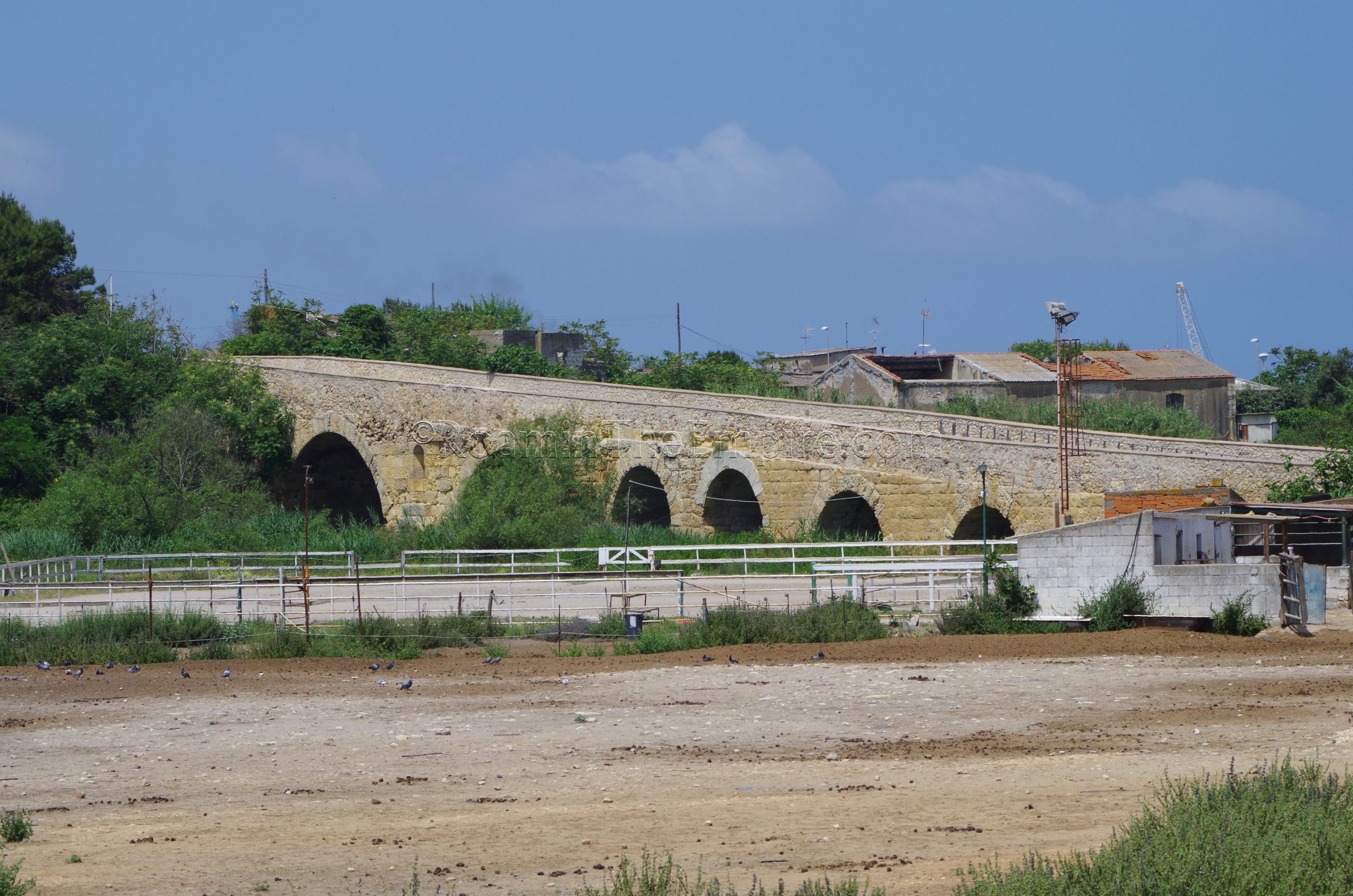
Ponte Romano
The last stop is in a few minute walk west of the archaeological park, the Ponte Romano. This Roman bridge, constructed during the Julio-Claudian dynasty, is the largest extant Roman bridge on Sardinia at 135 meters long. The seven arches of the Ponte Romano carry it over the Riu Mannu di Porto Torres, which was called the Flumen Turritanum in antiquity. The bridge provided a link between Turris Libysonis and the agricultural and mining areas to the west. Now closed to road traffic, a stretch of the original Roman paving is exposed on the east end of the bridge. One can walk across the bridge, but it’s difficult to get a good view of the bridge. Much of the area on either side is private land and is heavily vegetated. Apparently the field to the north is sometimes cleared offering a good view of the bridge from there, but I had to walk a bit to the south on Via Fontana Vecchia to get a decent side perspective.
Seeing the archaeological park and the bridge only took about an hour and a half. Had the museum and hypogeum been open, I could easily see spending about 3 hours to see the remains of Turris Libysonis. In either case, a half a day should be a pretty sufficient invest of time to put aside in Porto Torres to see everything. The museum is supposed to have some pretty nice pieces, though, so putting off visiting until the museum reopens, if possible, would probably be recommended. Fortunately, the Orpheus mosaic (which I had thought would be in the museum) is on site.
Sources:
Dyson, Stephen L. and Robert J. Rowland Jr. Archaeology and History in Sardinia from the Stone Age to the Middle Ages: Shepherds, Sailors, & Conquerors. Philadelphia: University of Pennsylvania Museum of Archaeology and Anthropology, 2007.
Ptolemy. Geographica, 3.3.
Smith, William. Dictionary of Greek and Roman Geography. Walton & Murray, 1870.
Stillwell, Richard, William L. MacDonald, and Marian Holland. McAllister. The Princeton Encyclopedia of Classical Sites. Princeton, NJ: Princeton U Press, 1976.


